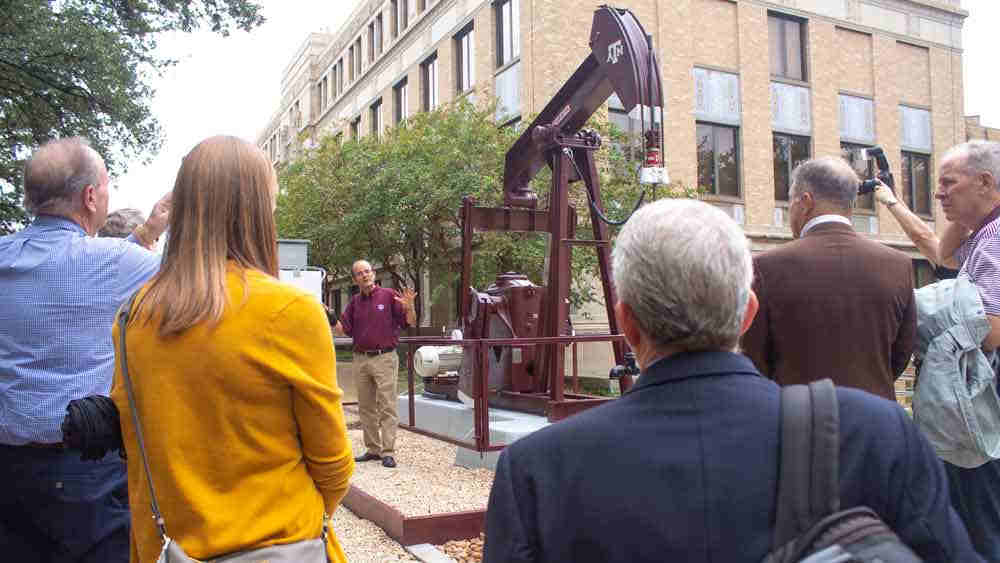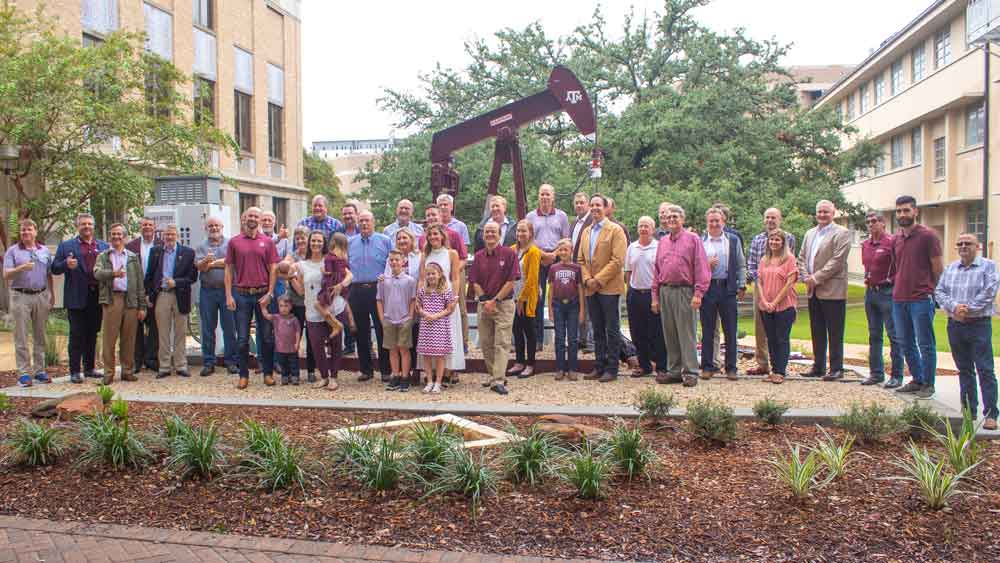
On Oct. 1, the Harold Vance Department of Petroleum Engineering at Texas A&M University celebrated the renovation of the equipment used on Aggie Well No. 1. The renovation allows petroleum engineering students to learn from, understand and work with the same technology that currently exists in oil and gas fields. Attendees included descendants of the well’s founder, J.T. Rollins, former students responsible for organizing the renovation and their families, faculty, staff and industry board members from the department.
“The students can walk out from the classroom environment and enter a small piece of the oil and gas field with a real pump unit installed on a real well,” said Dr. Ibere Alves, professor of engineering practice. “This is a lifetime experience. The students can operate the unit, learn how to measure with it for lab work and more. It is very important to have this connection of theory from the classrooms with actual equipment behavior.”

Aggie Well No. 1 came about in late 1983 when faculty member Dr. J.T. Rollins lobbied hard to drill a water well on campus and outfit it with a pump jack and other equipment so the department could instruct students firsthand on how well systems worked. At that time, the Doherty Building housed the petroleum engineering department, so the site was planned near the south end of the building. The well was drilled between mid-December 1983 and February 1984 with a shallow rig manned by donated student labor and supervised by Rollins. According to an article by the Bryan College Station Eagle in April 1984, Lufkin Industries (now part of GE Oil and Gas) donated the size-modified maroon and white pump jack, Sargent Industries donated the motor and controls, Trico Industries donated the sucker rod and pump, and RUTHCO donated the concrete foundation.
Faculty and students made full use of the unique teaching tool for years until the pump jack aged beyond safe operating parameters.
When Alves joined the faculty in 2015, he often walked by the pump jack and wondered if it was a monument. Asking questions led him to Dr. Thomas Blasingame, Robert L. Whiting Professor and the last faculty member to use the well for testing. Together, they serviced the unit enough so Alves could perform short, controlled demonstrations for his students.
In January 2020, two former students, Kory Kress and Mike Samford of Halcyon Equipment, stepped forward and proposed a way to bring the well back to life as the teaching tool it was meant to be. Arrangements were made to renovate the pump jack and upgrade the area surrounding the well for observation and safety purposes. While the plans were delayed by the pandemic, they were not halted. The renovation was completed this summer, thanks to donations from Halcyon.
The pump jack is now capable of operating safely and for longer times, allowing students to easily perform lab testing. A new variable frequency driver interfaces communication with the unit to automate certain processes and perfectly control the well’s motor speed and flow rates. An installed dynamometer lets students see and calculate operating characteristics such as plunger loads and displacement. Fluid levels can also be monitored, along with suction pressure and hydraulic power levels.
“We have something much better than a static monument, it is a piece of equipment that works and is very related with Texas A&M history,” said Alves. “I have already scheduled my class on location in October and am excited to see my students use this piece of field equipment to put theory into practice. I hope this will help generations of Aggie petroleum engineers to come.”